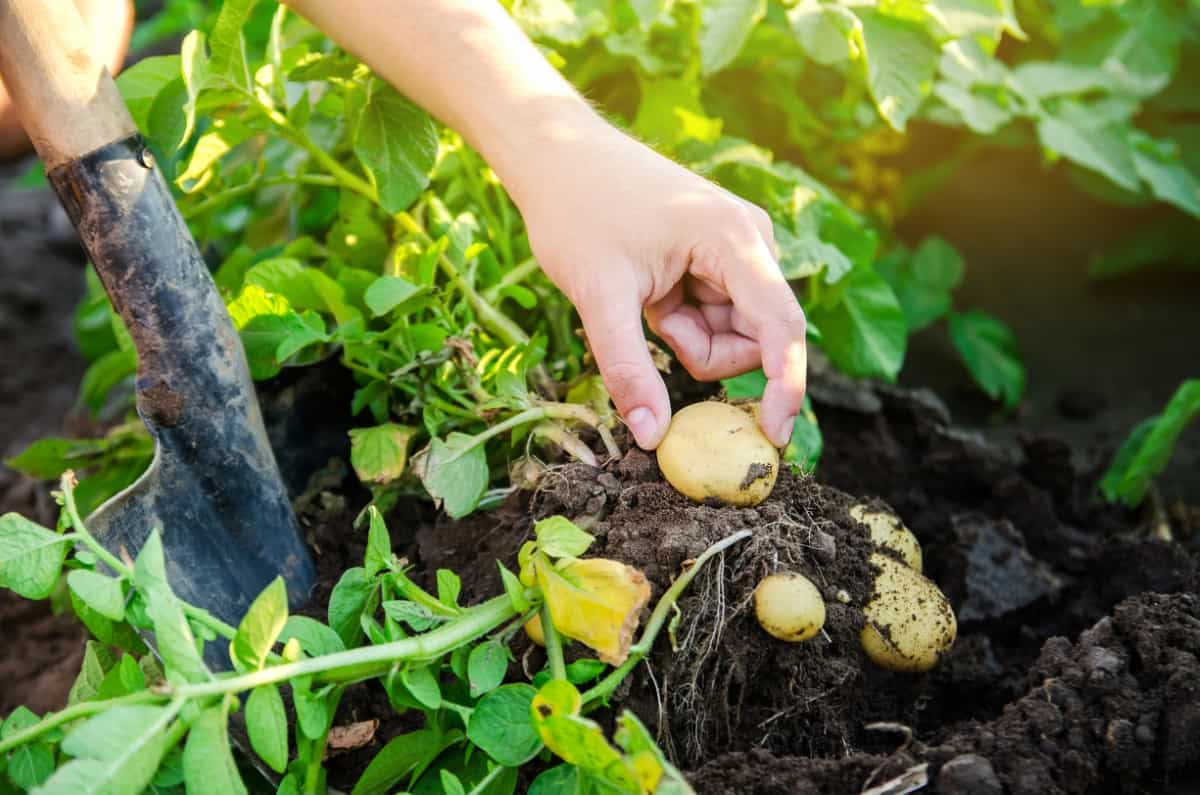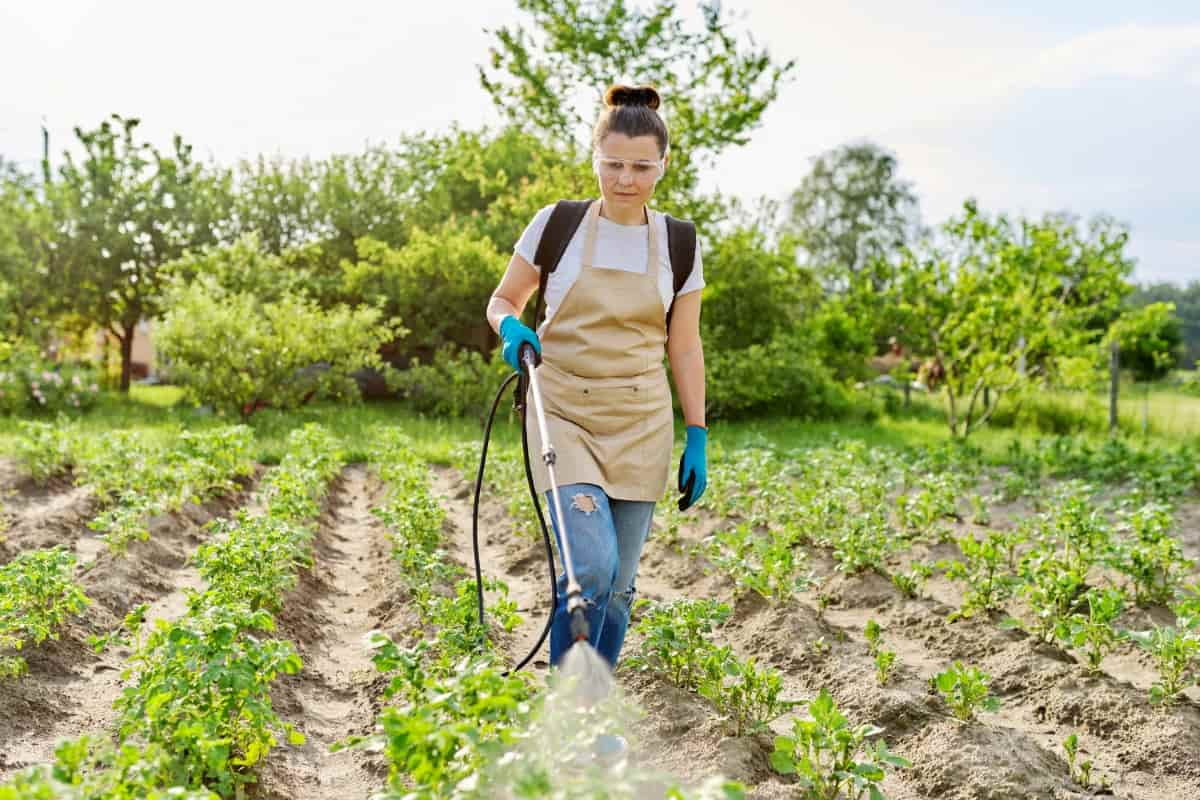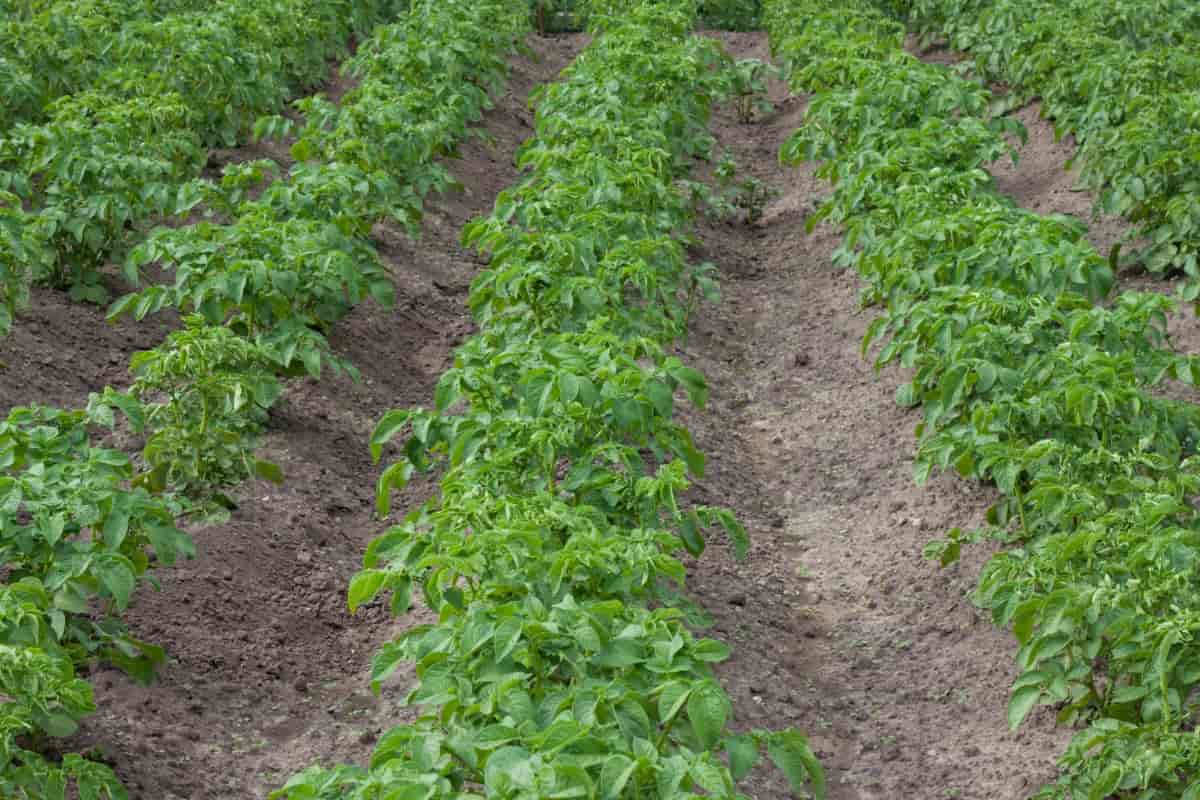Potatoes, a staple crop in many parts of the world, are susceptible to various diseases that can decimate yields if not managed properly. Various pathogens, including fungi, bacteria, viruses, and nematodes, can cause these diseases. Environmental conditions and farming practices can also exacerbate them.

However, employing the correct cultural practices can significantly reduce the prevalence of these diseases and ensure a healthy, high-yielding crop. Here we learn some of the most common diseases affecting potatoes and the cultural practices to employ for their prevention.
Preventing Common Potato Diseases Through Cultural Practices
Soil Preparation and Field Selection
One primary means of preventing potato diseases is through careful soil preparation and field selection. Planting potatoes in a well-drained field reduces the risk of water-borne diseases and helps keep the plants healthy. It’s also essential to avoid fields previously planted with potatoes or other solanaceous crops like tomatoes and peppers, which can harbor similar diseases. Rotating fields every three to four years can interrupt the life cycle of many potato pathogens and dramatically reduce disease pressure.
Proper soil preparation is also crucial. Adding organic matter to soil can improve soil structure and drainage, reducing disease risk. In addition, many pathogens thrive in acidic soil, so maintaining a soil pH of around 6.0 can help limit their proliferation. Regular soil testing ensures that the soil’s nutrient content and pH are optimal for potato growth and disease resistance.
Variety Selection and Seed Quality
Another key preventive measure is the selection of disease-resistant potato varieties. Although no variety is immune to all diseases, many have been bred to resist specific common diseases. It is advisable to consult with local extension services or seed suppliers to identify the varieties best suited to your local conditions and disease pressures.
Seed quality is also of utmost importance. Seed-borne potato diseases can spread from season to season through infected seed potatoes. To avoid introducing diseases, using certified disease-free seed potatoes is highly effective. Inspecting seed potatoes before planting and discarding any that show signs of disease is also crucial.
Planting and Irrigation Practices
Proper planting and irrigation practices can also help prevent potato diseases. Planting potatoes at the right depth and spacing can promote healthy plant growth and reduce disease susceptibility. Generally, seed potatoes should be planted about 3 inches deep and 12 inches apart in 30 to 36 inches apart rows. This spacing allows for good airflow between plants, reducing the humidity many potato diseases thrive on.
When it comes to irrigation, it’s important to avoid overwatering, as wet conditions can encourage the growth of fungi and bacteria. Drip or furrow irrigation can deliver water directly to the root zone, minimizing leaf wetness and the spread of foliar diseases. Watering early in the day also allows the plants to dry off before nightfall, further reducing disease risk.
Pest Management and Sanitation
Pests can be vectors for many potato diseases, so managing pest populations is key to disease prevention. Regularly monitoring your fields for pests and employing integrated pest management strategies can help keep pest numbers in check. These strategies may include biological controls, such as beneficial insects, and targeted use of pesticides when necessary.
In case you missed it: Adapt-A-Potato: Potato Varieties for Different Climate Conditions

Finally, maintaining good sanitation practices both in the field and in storage can prevent the spread of diseases. To prevent disease in the next season, promptly remove and destroy diseased plants, disinfect equipment and storage areas, and correctly dispose of plant debris. These actions greatly reduce the amount of disease-causing agents that can start infections in the next growing period.
Post-Harvest Handling
Post-harvest handling of potatoes is crucial in preventing storage diseases, which can cause significant losses. When harvesting, it’s important to avoid damaging the potatoes as wounds can provide entry points for pathogens. Potatoes should be allowed to cure in the field for a few hours to several days, depending on the weather, to allow the skin to harden and minor wounds to heal.
Following the completion of the harvesting process, it is recommended to store potatoes in a sanitary, cool, and adequately ventilated environment in order to mitigate the potential for diseases. Temperature plays a significant role in potato storage diseases; a temperature of around 50°F is typically recommended for preventing disease while maintaining tuber quality. High humidity in the storage area (around 90%) is also ideal as it prevents the potatoes from drying out, but good ventilation is required to prevent condensation, which could promote disease.
It is advisable to maintain a dim environment within the storage area to prevent the exposure of light, as illumination can trigger the development of chlorophyll in potatoes, resulting in the synthesis of solanine, an inherent poisonous substance. Any potatoes showing signs of disease should be promptly removed to prevent the spread of disease to healthy tubers.
Monitoring and Early Disease Detection
One critical yet often overlooked step in disease prevention is regular monitoring and early detection. Regular scouting of potato fields allows for early detection of disease symptoms, providing the opportunity to manage the disease before it spreads extensively throughout the field. Visual inspection of plants and looking out for signs of distress such as wilting, yellowing, or spotting can help identify the onset of diseases early.
In case you missed it: Best Soil Composition for Potato Cultivation

Utilizing disease forecasting tools, which predict disease risk based on weather conditions and local disease reports, can also aid in timely disease management. Early detection and swift, appropriate action can significantly reduce disease impacts, improving crop health and yield. It is a proactive measure that ensures the effectiveness of all the other steps involved in disease prevention.
Conclusion
Preventing potato diseases through cultural practices is a holistic approach, integrating measures from field and variety selection, planting, and growing to harvest and storage. Each step in the process provides an opportunity to reduce disease pressure and improve the health and productivity of your potato crop.
By paying attention to these details, growers can effectively safeguard their crops against the most common diseases, ensuring a healthy harvest season after season. Implementing these practices leads to healthier crops and promotes sustainable agriculture by reducing the need for chemical disease controls.
- Feed Your Flock for Less: Top 10 Tips to Save on Chicken Feed
- Ultimate Guide to Ossabaw Island Hog: Breeding, Raising, Diet, and Care
- Hatching Answers: The Top 10 Reasons Your Chickens Aren’t Laying Eggs
- Eggs and Economics: Breaking Down the Cost of Raising Backyard Chickens
- Defend Your Greens: Proven Methods to Keep Iguanas Out of Your Garden
- Ultimate Guide to Cinnamon Queen Chicken: A Comprehensive Guide for Beginners
- Ultimate Guide to California Tan Chicken: Breeding, Raising, Diet, Egg-Production and Care
- Ultimate Guide to Marsh Daisy Chicken: Breeding, Raising, Diet, and Care
- 10 Types of Chicken Farming Businesses You Can Start for Profits